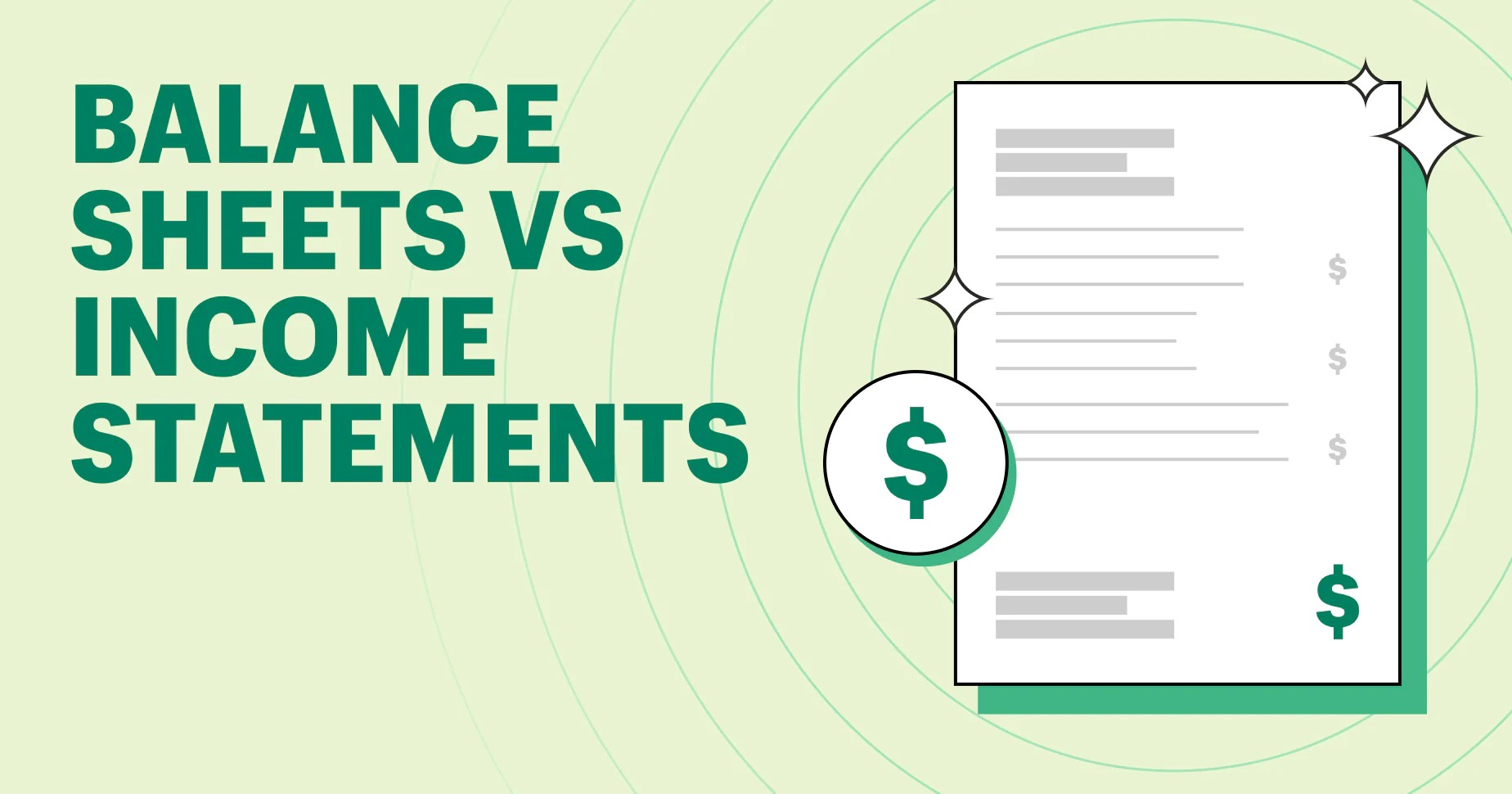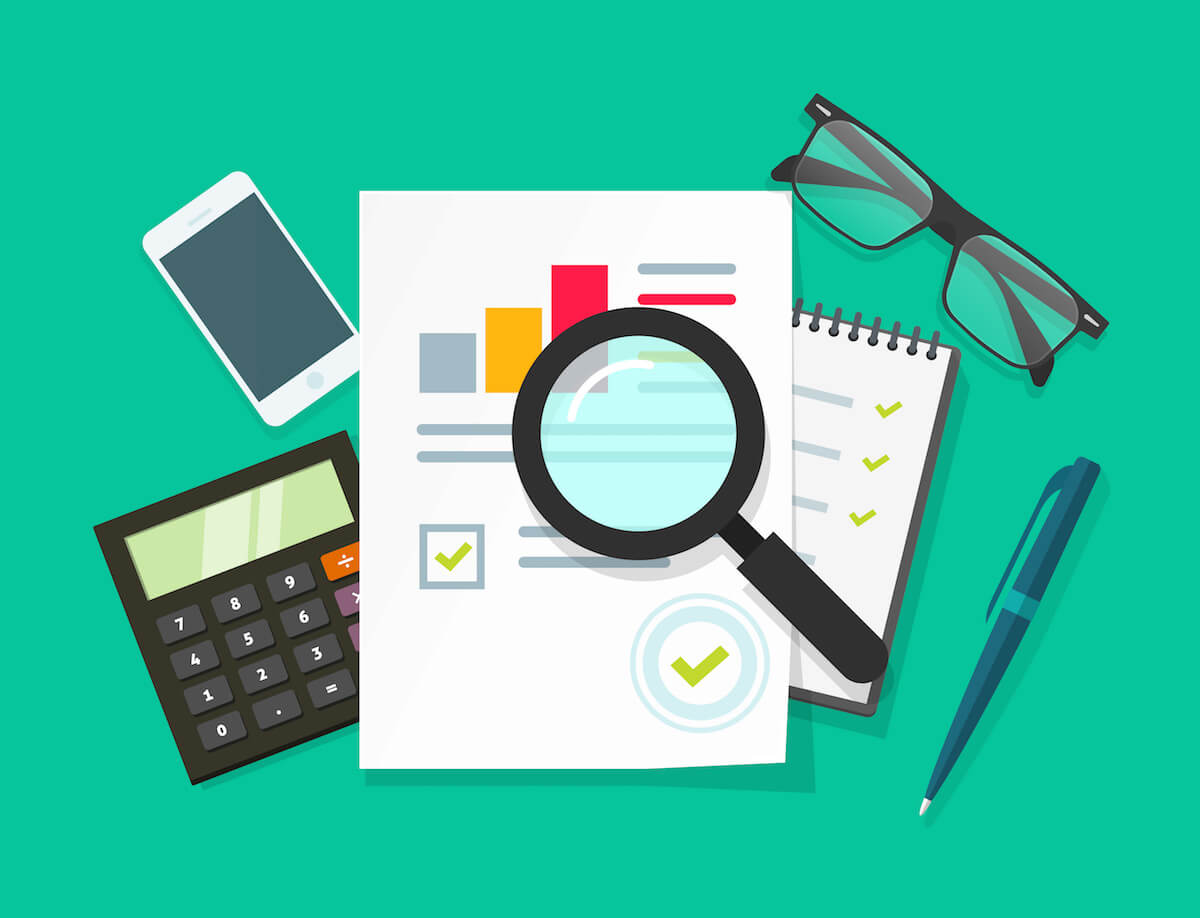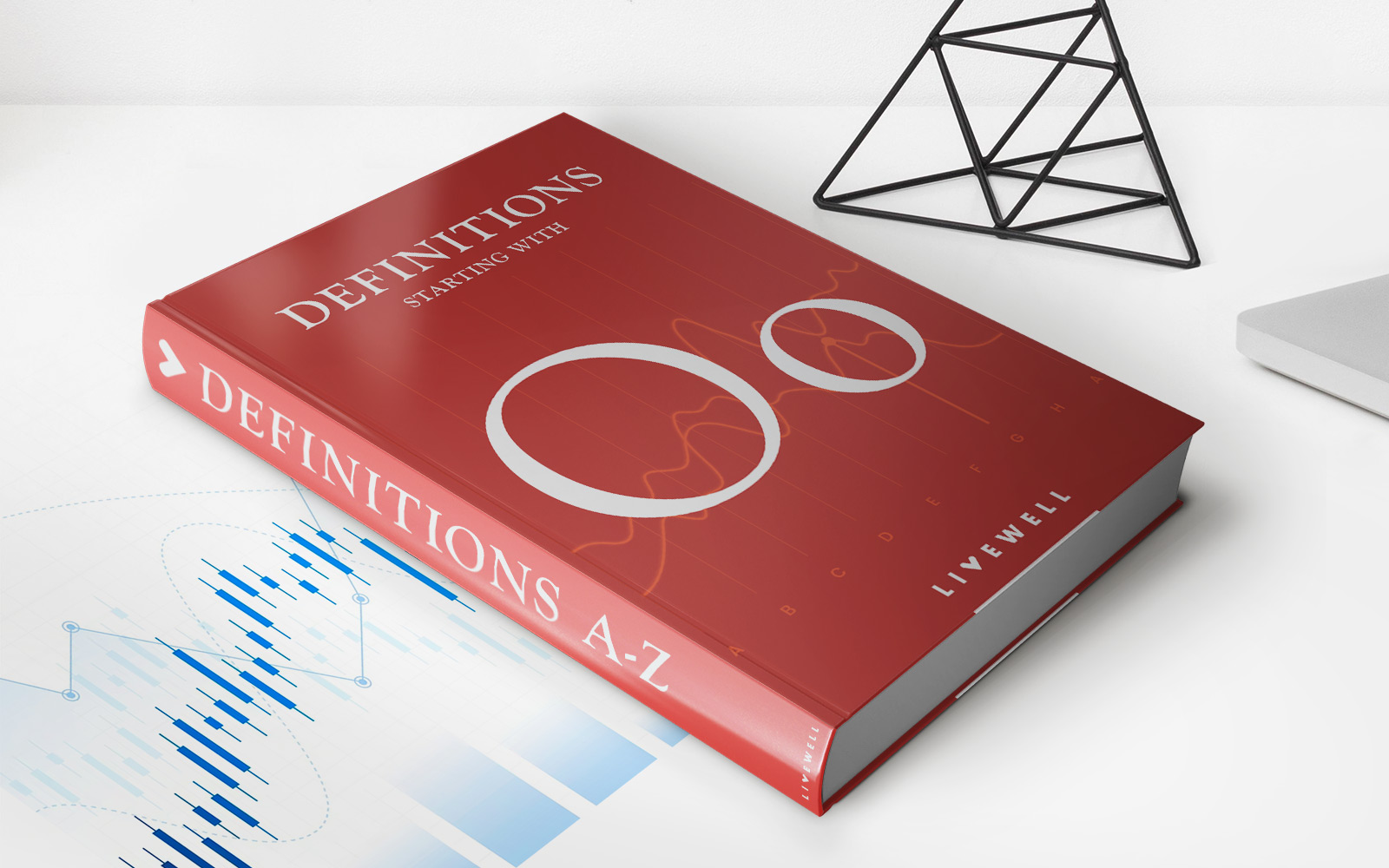Home>Finance>Which Is Best To Show Current Debts? Income Statement, Balance Sheet Or Cash Flow Statement?


Finance
Which Is Best To Show Current Debts? Income Statement, Balance Sheet Or Cash Flow Statement?
Published: March 2, 2024
Learn how to effectively showcase current debts using the income statement, balance sheet, or cash flow statement. Explore the best approach for financial management.
(Many of the links in this article redirect to a specific reviewed product. Your purchase of these products through affiliate links helps to generate commission for LiveWell, at no extra cost. Learn more)
Table of Contents
Introduction
Debt is a common aspect of personal and business finance. It allows individuals and organizations to make significant purchases or investments that they may not be able to afford outright. However, managing and understanding debt is crucial for financial stability and growth. When assessing an entity's financial position, it's essential to consider its current debts. But which financial statement is best suited for showcasing an entity's current debts? The income statement, balance sheet, or cash flow statement?
In this article, we will delve into the intricacies of each financial statement, exploring how they depict an entity's financial standing, including its current debts. By understanding the unique insights offered by the income statement, balance sheet, and cash flow statement, we can discern which one provides the most comprehensive view of an entity's current debts.
Let's embark on this enlightening journey through the world of finance to unravel the best method for showcasing an entity's current debts. Understanding the nuances of financial statements is not only valuable for professionals in the finance industry but also for individuals seeking to gain a deeper comprehension of their own financial standing. So, let's dive in and unravel the complexities of the income statement, balance sheet, and cash flow statement to determine the most effective means of showcasing current debts.
Understanding the Income Statement
The income statement, also known as the profit and loss statement, provides a snapshot of an entity’s financial performance over a specific period, typically a quarter or a year. It showcases the revenues generated and the expenses incurred during the designated timeframe. The fundamental equation of the income statement is:
Revenue – Expenses = Net Income
Revenue encompasses the income generated from the core business operations, such as sales of products or services. On the other hand, expenses encapsulate the costs associated with running the business, including raw materials, employee salaries, utilities, and other operational expenditures.
When it comes to showcasing current debts, the income statement offers insights into the entity’s debt-servicing capabilities. It reveals the interest expenses incurred on outstanding debts, providing a glimpse into the financial burden imposed by current liabilities. Additionally, the income statement may highlight any extraordinary expenses or one-time charges, shedding light on the impact of debt obligations on the entity’s overall financial performance.
Moreover, the income statement allows stakeholders to assess the entity’s profitability and its ability to generate sufficient income to cover operating expenses, including debt payments. By analyzing the net income or loss, investors and creditors can gauge the entity’s capacity to service its existing debts and sustain its operations.
While the income statement offers valuable insights into the financial performance and debt-servicing capabilities of an entity, it primarily focuses on a specific timeframe and may not provide a comprehensive overview of its overall financial position. To gain a holistic understanding of an entity’s financial standing, it is imperative to complement the insights garnered from the income statement with those derived from the balance sheet and cash flow statement.
Understanding the Balance Sheet
The balance sheet, also referred to as the statement of financial position, offers a comprehensive overview of an entity’s financial standing at a specific point in time. It comprises three fundamental components: assets, liabilities, and equity. The balance sheet adheres to the accounting equation:
Assets = Liabilities + Equity
Assets encompass everything of value that the entity owns, including cash, inventory, property, equipment, and investments. Liabilities represent the entity’s obligations, including current debts such as accounts payable, short-term loans, and long-term debts. Equity reflects the residual interest in the entity’s assets after deducting its liabilities.
When evaluating an entity’s current debts, the balance sheet serves as a pivotal source of information. It delineates the entity’s short-term and long-term liabilities, offering clarity on its debt obligations. By scrutinizing the liabilities section, stakeholders can identify the entity’s current debts and their respective magnitudes. This facilitates an understanding of the entity’s solvency and liquidity, as it portrays the extent to which current assets can cover current liabilities.
Furthermore, the balance sheet enables stakeholders to calculate crucial financial ratios, such as the debt-to-equity ratio and the current ratio. The debt-to-equity ratio provides insights into the entity’s leverage and its reliance on external financing, including debts. On the other hand, the current ratio assesses the entity’s ability to meet its short-term obligations, including current debts, by comparing its current assets to its current liabilities.
By encapsulating the entity’s assets, liabilities, and equity, the balance sheet offers a holistic view of its financial position, including its current debts. It provides stakeholders with essential information to gauge the entity’s financial health, debt structure, and capacity to fulfill its obligations. However, to gain a comprehensive understanding of the entity’s cash flows and its ability to meet debt payments, it is imperative to complement the insights derived from the balance sheet with those obtained from the income statement and cash flow statement.
Understanding the Cash Flow Statement
The cash flow statement is a vital financial document that tracks the inflow and outflow of cash within an entity during a specified period. It is segmented into three key categories: operating activities, investing activities, and financing activities. The cash flow statement provides insights into how the entity generates and utilizes cash, offering a distinct perspective on its financial performance and liquidity.
When assessing an entity’s current debts, the cash flow statement plays a crucial role in illuminating its cash management and debt-servicing capabilities. By analyzing the operating activities section, stakeholders can discern the entity’s ability to generate cash from its core operations and evaluate whether the generated cash is sufficient to cover its operational expenses, including debt payments. Additionally, the financing activities section sheds light on the entity’s borrowing and repayment activities, showcasing the inflow of cash from debt issuance and the outflow of cash from debt repayments.
Furthermore, the cash flow statement aids in evaluating the entity’s liquidity and its capacity to meet its short-term and long-term debt obligations. By examining the net cash provided by operating activities and comparing it to the entity’s debt service requirements, stakeholders can gauge the sufficiency of cash flows to service its current debts. This assessment is pivotal in determining the entity’s ability to honor its financial commitments and maintain financial stability.
Moreover, the cash flow statement facilitates the calculation of vital financial metrics, such as the operating cash flow ratio and the free cash flow. The operating cash flow ratio measures the entity’s ability to generate cash from its core operations to cover its current liabilities, including current debts. On the other hand, the free cash flow reflects the cash remaining after fulfilling operational and capital expenditure requirements, providing insights into the entity’s capacity to service debts and pursue growth opportunities.
By delineating the entity’s cash inflows and outflows across operating, investing, and financing activities, the cash flow statement offers a comprehensive view of its liquidity, cash management, and debt-servicing capabilities. However, to gain a holistic understanding of the entity’s financial standing and its current debts, it is imperative to integrate the insights derived from the cash flow statement with those obtained from the income statement and balance sheet.
Comparing the Three Statements
When evaluating an entity’s current debts, it is essential to compare the insights provided by the income statement, balance sheet, and cash flow statement to gain a comprehensive understanding of its financial position and debt-servicing capabilities. Each financial statement offers unique perspectives and metrics that collectively contribute to a holistic assessment of an entity’s current debts.
The income statement primarily focuses on the entity’s revenue, expenses, and net income over a specific period. It illuminates the impact of debt obligations on the entity’s profitability and showcases its ability to generate income to cover operating expenses, including debt payments. Additionally, the income statement highlights interest expenses and extraordinary charges, providing insights into the financial burden imposed by current debts.
On the other hand, the balance sheet offers a snapshot of the entity’s financial standing at a specific point in time. It delineates the entity’s assets, liabilities, and equity, showcasing its current debts and overall debt structure. By scrutinizing the liabilities section, stakeholders can identify the entity’s short-term and long-term debt obligations, facilitating an assessment of its solvency and liquidity.
Meanwhile, the cash flow statement tracks the entity’s cash inflows and outflows across operating, investing, and financing activities. It provides insights into the entity’s cash generation, utilization, and debt-servicing capabilities. By analyzing the operating activities section, stakeholders can gauge the sufficiency of cash flows to service the entity’s current debts and assess its liquidity and cash management.
While the income statement, balance sheet, and cash flow statement offer valuable insights into an entity’s financial performance and debt-servicing capabilities, they are interconnected and collectively contribute to a comprehensive assessment. Integrating the information derived from these statements enables stakeholders to evaluate the entity’s profitability, financial position, liquidity, and capacity to meet its debt obligations.
By leveraging the distinctive perspectives and metrics provided by the income statement, balance sheet, and cash flow statement, stakeholders can make informed decisions regarding the entity’s current debts, financial health, and overall viability. Each statement contributes essential pieces to the financial puzzle, culminating in a comprehensive depiction of the entity’s current debts and its financial standing.
Determining the Best Statement for Showing Current Debts
When it comes to showcasing an entity’s current debts, each financial statement offers unique insights that collectively contribute to a comprehensive understanding of its debt obligations and financial position. However, determining the best statement for showcasing current debts necessitates a nuanced evaluation of the distinctive attributes and metrics provided by the income statement, balance sheet, and cash flow statement.
The income statement, with its focus on revenue, expenses, and net income over a specific period, offers valuable insights into the impact of debt obligations on the entity’s profitability. It highlights interest expenses and extraordinary charges, providing clarity on the financial burden imposed by current debts. However, the income statement primarily portrays a snapshot of the entity’s financial performance and may not offer a comprehensive overview of its overall debt structure and liquidity.
On the other hand, the balance sheet provides a holistic view of the entity’s financial standing at a specific point in time, encompassing its assets, liabilities, and equity. It delineates the entity’s current debts and overall debt structure, facilitating an assessment of its solvency and liquidity. The balance sheet’s portrayal of short-term and long-term liabilities offers clarity on the entity’s debt obligations, contributing to a comprehensive understanding of its financial position.
Meanwhile, the cash flow statement tracks the entity’s cash inflows and outflows across operating, investing, and financing activities, offering insights into its cash generation, utilization, and debt-servicing capabilities. It facilitates an assessment of the sufficiency of cash flows to service current debts and provides clarity on the entity’s liquidity and cash management. The cash flow statement’s focus on cash movements contributes to a nuanced understanding of the entity’s ability to meet its debt obligations.
Considering the distinctive attributes and insights offered by the income statement, balance sheet, and cash flow statement, determining the best statement for showcasing current debts hinges on the specific information needs of stakeholders. For investors focused on the entity’s profitability and the impact of debt on its financial performance, the income statement provides pertinent insights. However, for a comprehensive overview of the entity’s debt structure, solvency, and liquidity, the balance sheet emerges as a pivotal source of information.
Moreover, the cash flow statement plays a crucial role in illuminating the entity’s cash management and debt-servicing capabilities, offering a distinct perspective on its financial performance and liquidity. Therefore, integrating the insights from all three statements is imperative for stakeholders to gain a holistic understanding of an entity’s current debts and its overall financial standing.
Ultimately, the best statement for showcasing current debts depends on the specific analytical requirements and the need for a comprehensive depiction of an entity’s debt obligations, financial health, and liquidity. By leveraging the unique perspectives and metrics provided by the income statement, balance sheet, and cash flow statement, stakeholders can make informed decisions and gain a nuanced understanding of an entity’s current debts and its financial viability.
Conclusion
In the realm of finance, understanding an entity’s current debts is integral to assessing its financial health and stability. The income statement, balance sheet, and cash flow statement each offer unique insights that collectively contribute to a comprehensive understanding of an entity’s debt obligations and financial position. While the income statement illuminates the impact of debt on profitability, the balance sheet provides a holistic view of the entity’s financial standing, and the cash flow statement offers clarity on its cash management and debt-servicing capabilities.
When determining the best statement for showcasing current debts, it is imperative to consider the specific information needs of stakeholders. For investors focused on profitability and the impact of debt on financial performance, the income statement provides pertinent insights. However, for a comprehensive overview of an entity’s debt structure, solvency, and liquidity, the balance sheet emerges as a pivotal source of information. Moreover, the cash flow statement plays a crucial role in illuminating an entity’s cash management and debt-servicing capabilities, offering a distinct perspective on its financial performance and liquidity.
Integrating the insights from all three statements is imperative for stakeholders to gain a holistic understanding of an entity’s current debts and its overall financial standing. By leveraging the unique perspectives and metrics provided by the income statement, balance sheet, and cash flow statement, stakeholders can make informed decisions and gain a nuanced understanding of an entity’s current debts and its financial viability.
In conclusion, while each financial statement offers valuable insights into an entity’s debt obligations and financial performance, it is the collective integration of these insights that empowers stakeholders to make informed decisions. Understanding an entity’s current debts goes beyond a singular statement and necessitates a comprehensive analysis that considers its profitability, financial position, liquidity, and debt-servicing capabilities. By embracing the multifaceted nature of financial statements, stakeholders can navigate the complexities of debt assessment and gain a holistic perspective on an entity’s financial standing.














